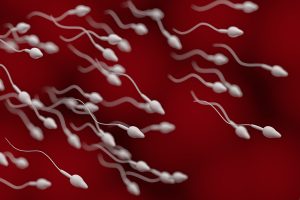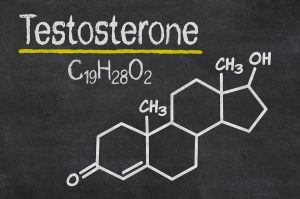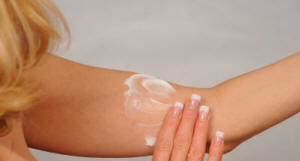What do decreased sperm counts in men tell us about our world? A recent study has shown that over the past 40 years males in many centers that tested for sperm counts have lost 50% of the sperm count that was normal in the 1970’s. The question is, what could have caused this? Nobody has definite answers. But here are the factors that the Mayo Clinic lists for low sperm counts.
Medical causes of decreased sperm counts in men
- A varicocele: A varicocele is dilatation of veins close to the testicles. It is presumed that this leads to a higher temperature inside the testicles and this causes a lowered sperm count and poor sperm quality.
- Antisperm antibodies can cause infertility. Due to low sperm counts.
- Infections in the testicles reduce sperm production. Gonorrhea and HIV infection are some of the common infections.
- Some men develop retrograde ejaculation. With this the sperm enter the bladder on ejaculation instead of coming out from the tip of the penis. Alpha-blockers, a type of blood pressure medication can do this as a side effect. But there are also various health problems that can cause retrograde ejaculation like diabetes, surgery to the prostate, urethra and bladder. Spinal injuries can be also a cause of retrograde ejaculations. In many cases the sperm production in the testicles is still present and sperm could be sampled from there for artificial insemination.
- Tumors of the pituitary gland can interfere with hormone production of testosterone and sperm counts will fall or stop. But other pituitary hormones, thyroid hormone and adrenal gland hormones are needed for fertility.
- Chromosome defects like Klinefelter syndrome and others can be a cause of abnormal development of the male genitals with low or missing sperm production.
- Celiac disease is a bowel disease that is due to gluten sensitivity. It causes low sperm counts and infertility, which responds to a gluten free diet. Sperm counts normalize with this diet.
- There are medications that can decrease sperm production like chemotherapy, anabolic steroid use, antifungals and certain antibiotic medications and some ulcer medications.
Lifestyle causes leading to decreased sperm counts in men
Certain lifestyles and occupations can cause a man to have a decreased sperm count.
- Drinking alcohol excessively can reduce testosterone production, which decreases sperm count.
- Recreational drug use: steroids to increase muscle mass cause testicular atrophy and decreased sperm count. Cocaine and marihuana also decreases the sperm count.
- Certain occupations like welding from exposure to heat and truck driving from prolonged sitting have been associated in some studies with infertility. But there are other studies that could not confirm this correlation.
- Smoking: Men who smoke have lower sperm counts than men who don’t smoke.
- Excessive weight: Obese men transform some of their testosterone into estrogen through the action of the enzyme aromatase, which is amply present in fat cells. This leads to low testosterone levels and low sperm counts.
Environmental causes of decreased sperm counts in men
The environment in terms of heat production around the scrotum or exposure to chemicals or ionizing radiation can lower sperm counts in men.
- Heat around the testicles: studies do not all agree, but there is a tendency for low sperm counts when using saunas and hot tubs frequently. Sitting for longer times or using a laptop computer for longer periods can also increase the temperature of a man’s scrotum and lead to a low sperm count.
- Exposure to heavy metals like lead, mercury and others can be the cause of infertility.
- Exposure to radiation can reduce sperm production. With high doses of radiation sperm production may cease entirely. With lower radiation exposures sperm counts may be down for several years before they recover to normal.
- Industrial chemicals: exposure to fumes from certain chemicals can lead to low sperm counts; benzenes, herbicides, pesticides, xylene, toluene, painting materials and organic solvents are on this list.
Recent study about decreased sperm counts in men as an indicator
We have now reviewed the major causes of low sperm counts in men. I like to revisit the recent sperm study I mentioned in the beginning of this blog. It is unlikely that men in North America, Europe and Australia would spontaneously produce less than 50% of the sperm than men 40 years earlier had produced. The next puzzling fact is that the study found normal sperm production in men in Africa, South America and Asia.
This points to epidemiological differences that reduce the sperm count in men in North America, Europe and Australia. In view of the multitude of possible causes it will require a task force that does a comparative study worldwide looking at exposure history, diets, social habits and other factors.
Fertility clinics are thriving because couples want children. With low sperm counts of males there is more infertility than there was in the past. Density gradient centrifugation is a reliable method of enriching sperm counts.
In the past a couple had no problem getting a successful pregnancy when they wanted it. Now couples often have to be assessed in a fertility clinic because of problems with regard to decreased sperm counts in men, which can cause infertility.
Conclusion
A new study has noticed that over the past 40 years many men have developed low sperm counts. This has caused significant problems with fertility among couples. Fertility clinics are busy trying to help these couples. Density gradient centrifugation has become a common technique to enrich sperm samples prior to artificial insemination. It is a puzzle why the recent study has found normal sperm counts in samples of men living in Africa, South America and Asia. In contrast men living in Europe, North America and Australia have 50% lower sperm counts. The reason may be multifactorial. It will require a team of experts to sort out this discrepancy and hopefully find an answer for men in Europe, North America and Australia to bring their sperm counts back to normal.










